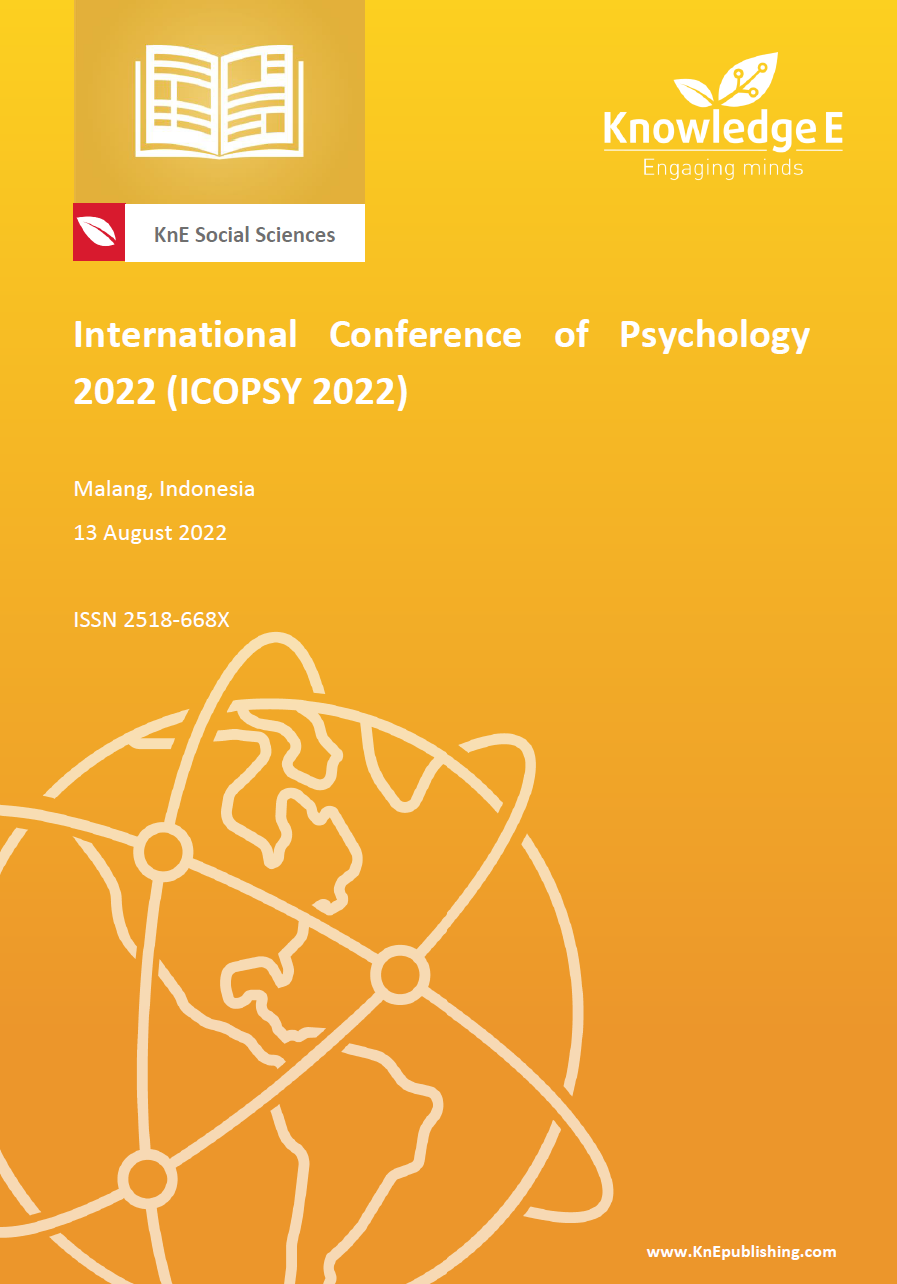The Relationship Between Organizational Commitment and Employee Turnover Intention in PT. X Mojokerto
DOI:
https://doi.org/10.18502/kss.v7i18.12401Abstract
The turnover intention for employees occurs in every company, including PT. X Mojokerto which is located in Jabon District, Mojokerto Regency. The purpose of the study is to empirically examine whether there is a relationship between organizational commitment and employee turnover intention in PT. X Mojokerto. A quantitative approach is used in this study with a descriptive correlational research design. Correlational research was used in the design of this study, where this study illustrates the presence or absence of relationships between the variables to be measured. There are 57 employees of PT. X Mojokerto who were recruited through accidental sampling. The instruments were the OC organizational commitment scale and the Turnover Intention Scale 14 (TIS-14). The data analysis techniques used in the study are descriptive analysis and Pearson Product Moment correlation data analysis techniques. Descriptive analysis aims to describe organizational commitment and turnover intention. The results showed a significant negative relationship.
Keywords: organizational commitment, turnover intention, employees
References
[2] https://www2.deloitte.com/content/dam/Deloitte/global/Documents/About- Deloitte/gx-2018-millennial-survey-report.pdf.
[3] Putra MTP, Prihatsanti U. Hubungan antara beban kerja dengan intensi turnover pada karyawan di PT.“X”. Jurnal Empati. 2016;5(2):303-307.
[4] Aamodt MG. Applied industrial/organizational psychology. 4th ed. Mason: Thomson South West; 2004.
[5] Stamolampros P, Korfiatis N, Chalvatzis K, Buhalis D. Job satisfaction and employee turnover determinants in high contact services: Insights from employees’ online reviews. Tourism Management. 2019;75:130-147. https://doi.org/10.1016/j.tourman.2019.04.030
[6] Sakina N. Komitmen organisasi karyawan pada PT. Bank “X” di Jakarta. Jurnal Psikologi. 2009;7(2):53-62.
[7] Mobley WH, Griffeth RW, Hand HH, Meglino BM. Review and conceptual analysis of the employee turnover process. Psychological Bulletin. 1979;86(3):493-522.
[8] Griffeth RW. A Meta-Analysis of antecedents and correlates of employee turnover: Update, moderator tests, and research implications for the next millennium. Journal of
[9] Management. 2000;26(3):463–488.
[10] Chughtai AA, Zafar S. Antecedents and consequences of organizational commitment among Pakistani university teachers. Applied H.R.M. Research. 2006;11(1):39-64.
[11] McInerney DM, Ganotice FA, King RB, Marsh HW, Morin AJS. Exploring commitment and turnover intentions among teachers: What we can learn from Hong Kong teachers. Teaching and Teacher Education. 2015;52:11–23. https://doi.org/10.1016/j.tate.2015.08.004
[12] Sianipar ARB, Haryanti K. Hubungan komitmen organisasi dan kepuasan kerja dengan intensi turnover pada karyawan bidang produksi CV. X. Psikodimensia. 2014;13(1):98-114.
[13] Handaru AW, Muna N. Pengaruh kepuasan gaji dan komitmen organisasi terhadap
[14] intensi turnover pada divisi PT Jamsostek. Jurnal Riset Manajemen Sains Indonesia. 2012;3(1):1-19.
[15] Hussain T, Asif S. Is employees’ turnover intention driven by organizational commitment and perceived organizational support. Journal of Quality and Technology Management. 2012;8(2):1-10.
[16] Wickramasinghe D, Wickramasinghe V. Perceived organisational support, job involvement and turnover intention in lean production in Sri Lanka. The International Journal of Advanced Manufacturing Technology. 2011;55:817–830.
[17] Jacobs E, Roodt G. The development of a knowledge sharing construct to predict turnover intentions. Aslib Proceedings: New Information Perspectives. 2007;59(3):229–248. https://doi.org/10.1108/00012530710752034
[18] Moorhead G, Griffin Ricky W. Perilaku organisasi: Manajemen sumber daya manusia dan organisasi. Jakarta: Salemba Empat; 2013.
[19] Allen NJ, Meyer JP. A three-component conceptualization of organizational commitment. Human Resource Management Review. 1991;1(1):61-89. https://doi.org/10.1016/1053-4822(91)90011-Z
[20] Agus A, Selvaraj R. The mediating role of employee commitment in the relationship between quality of work life and the intention to stay. Employee Relations. 2020;42(6):1231–1248. https://doi.org/10.1108/ER-07-2019-0292
[21] Umam K. Perilaku organisasi. Bandung: CV Pustaka Setia; 2012.
[22] Santoso AL, Sitompul SA, Budiatmanto A. Burnout, organizational commitment and turnover intention. Journal of Business and Retail Management Research. 2018;13(1):62-69.
[23] Melky Y. Hubungan kepuasan kerja dan komitmen organisasi terhadap intensi pindah kerja (turnover intention) karyawan PT Rejeki Abadi Sakti Samarinda. Psikoborneo. 2015;3(1):98-111.
[24] Hussain A, Khan MA, Hussain J. Interplay of organizational commitment and turnover intention in academic sector. Review of Economics and Development Studies. 2020;6(2):401-412. http://dx.doi.org/10.47067/reads.v6i2.218
[25] Rismawan PAE, Supartha WG, Yasa NNK. Peran mediasi komitmen organisasional pada pengaruh stress kerja dan kepuasan kerja terhadap intensi keluar karyawan. E-Jurnal Ekonomi dan Bisnis Universitas udayana. 2014;3(8):424 – 441.

